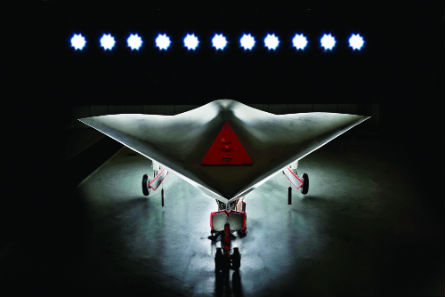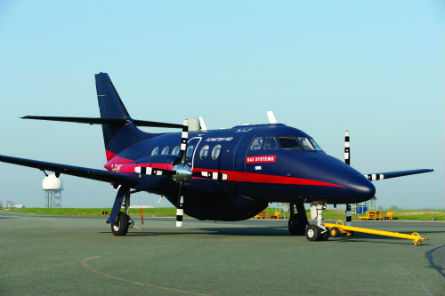When BAE Systems unveiled the UK's Taranis unmanned combat air system (UCAS) technology demonstrator just before the last Farnborough air show, it represented the nation's sowing a £140 million ($220 million) seed towards a potentially critical future sovereign capability.
Two years on, the strategic landscape has dramatically changed. The British and French governments in late 2010 signed an historic memorandum of understanding, which included a plan to jointly pursue the development of unmanned surveillance and strike systems. These should be capable of meeting the needs of the countries - both operationally and industrially.
Driven by political desire, the step led to an unlikely alliance between BAE and Dassault, which had long been fierce rivals based on their roles in manufacturing the Eurofighter Typhoon and Rafale fighters. They were also each involved in separate UCAS efforts: the UK-only Taranis and French-led multinational Neuron demonstration programmes, respectively.
The recent replacement of Nicolas Sarkozy as French president by François Hollande had prompted speculation that the nations might opt to review their proposed closer military collaboration, but BAE and Dassault will in fact use Farnborough to strengthen their relationship.
Contracts linked to two new activities are likely to be signed at or around the show, says Tom Fillingham, director of future combat air systems (FCAS) for BAE's Military Air & Information business unit.
 |
|---|
| BAE Systems BAE will return its Mantis demonstrator to flight in early 2013 |
The first, to run for a period of 18 months, will cover technology maturation and risk-reduction work on a joint medium-altitude, long-endurance (MALE) unmanned air system named Telemos, with the UK company's Mantis platform identified as a starting point.
"Part of the process is to look around weaponisation, but there are no specifics," Fillingham says. "We want the product to be as flexible as possible."
PUSHING FORWARDS
Once this next phase of collaboration has been completed, the partners are likely to push towards a full development and production contract, with a future workshare allocation already having been agreed. "But first we must demonstrate that the technologies are mature," he says.
The proposed MALE system does not mark the boundary of Anglo-French ambition, however, with BAE and Dassault also looking to their production interests beyond their current manned flagships. The UK company's final assembly work on the Typhoon is currently secured until 2017, while its aft-fuselage production role on the Lockheed Martin F-35 Joint Strike Fighter is forecast to run until 2036. France's Rafale orders should keep the type in build until 2019, although a pending deal with India and other export prospects could push this further. But for both, thinking about what comes next is a growing priority.
"At Farnborough we will also look for a positive indication from the governments that they are willing to allow BAE, Dassault and engine suppliers [Rolls-Royce and Snecma] to work on an 18-month FCAS demonstrator preparation programme," Fillingham says. This will draw on the companies' respective experiences with the Taranis and Neuron air vehicles, both of which are expected to make their flight debuts within the coming months.
A scale model of a conceptual future strike aircraft will be on display outside BAE's exhibit at the show, but Fillingham stresses that this "is not the designed vehicle" for any Anglo-French programme. The company also does not rule out the possibility of manned systems being considered as a part of such studies.
Also at Farnborough in model-only form will be the BAE-led Taranis design, which is now expected to make its delayed first flight early in 2013. Recent test work involving the stealthy aircraft has included successful engine intake integration trials conducted at Rolls-Royce's Filton site in Bristol, and radar cross-section (RCS) pole testing performed by BAE in Warton, Lancashire.
 |
|---|
| BAE Systems The Taranis will make a model-only appearence at Farnborough |
PROMISING RESULTS
Speaking inside the highly secure 326 Hangar at Warton last month, Fillingham said data from the RCS test work was still being assessed by the UK Ministry of Defence and its Defence Science and Technology Laboratory. However, he revealed that "the results are very promising".
BAE had previously expected the Taranis to make its debut flight in 2012, but says the schedule was pushed back following a systems review performed late last year. "First flight isn't really the key thing - we're developing a technology," Fillingham notes. "If you chase a first flight you make mistakes."
Several of the company's previous unmanned systems, including the Mantis and earlier Corax and Raven technology demonstrators, were tested at the secluded Woomera range in South Australia, but Fillingham declines to say where it will take Taranis. "I can't give information on when and where we will go next year, but we have agreed a series of flight-test activities, which we will complete in 2013," he says.
In another development, BAE has revealed plans to return its Mantis demonstrator to flight status, with the MALE type to take to the skies in the UK for the first time early next year in support of the Telemos effort. With a wingspan of almost 20m (65.6ft), the stored aircraft has recently been inspected at Warton and is described as being "pretty much good to go". Three or four potential sites are being looked at to host the future trials work with the autonomous air vehicle.
Fillingham says BAE is investing some £4-5 million in 2012 to return the Mantis to use, with more to be spent next year. It is also hoping to secure backing from the MoD to fly the aircraft, which will also draw on technologies showcased with its now-parked Herti product.
Getting a large, twin-engined UAS to fly in UK airspace will require working closely with the nation's Civil Aviation Authority, but is also intended to support an ongoing effort to perform such activities on a more routine process than is possible today.
BAE is among a number of companies, academic establishments and regional authorities in the UK that are participating in the ASTRAEA initiative to advance this cause. A Jetstream 31 testbed is currently being readied for a significant package of flight trials, likely to total around 20 sorties flown in UK airspace and over the Irish Sea.
 |
|---|
| BAE Systems A Jetstream testbed is supporting airspace integration trials |
Key elements of the two- to three-month campaign include proving the modified aircraft's autonomous visual sense-and-avoid technology and other aspects useful for unmanned systems, such as a vision-based weather avoidance system and an emergency landing mode. A second, manned aircraft, will also participate in collision avoidance trials including the surrogate UAV.
Each flight performed with the testbed will last for around 3h, with the aircraft to carry pilots and onboard engineers, while flying under the supervision of air traffic control. However, Fillingham notes that "once it's in the air, it flies like a UAV". Pre-trial test flights have been performed from Warton, and the aircraft - G-BWWW - is due to be on static display at Farnborough.
Now in its second phase, which is due to conclude in March 2013, the ASTRAEA scheme is intended to prove the ability of autonomous systems to operate routinely and safely in non-segregated airspace.
For BAE's part, Fillingham says, "the technologies will ultimately go into Mantis and hopefully other of our UAVs. They will also give the UK a really strong position re the Anglo-French programmes.
"What we're trying to develop is a product range that encompasses the future of British aviation, and a set of UAV capabilities that can be integrated in systems to meet UK requirements and those of numerous other countries," he adds.
Source: Flight International























